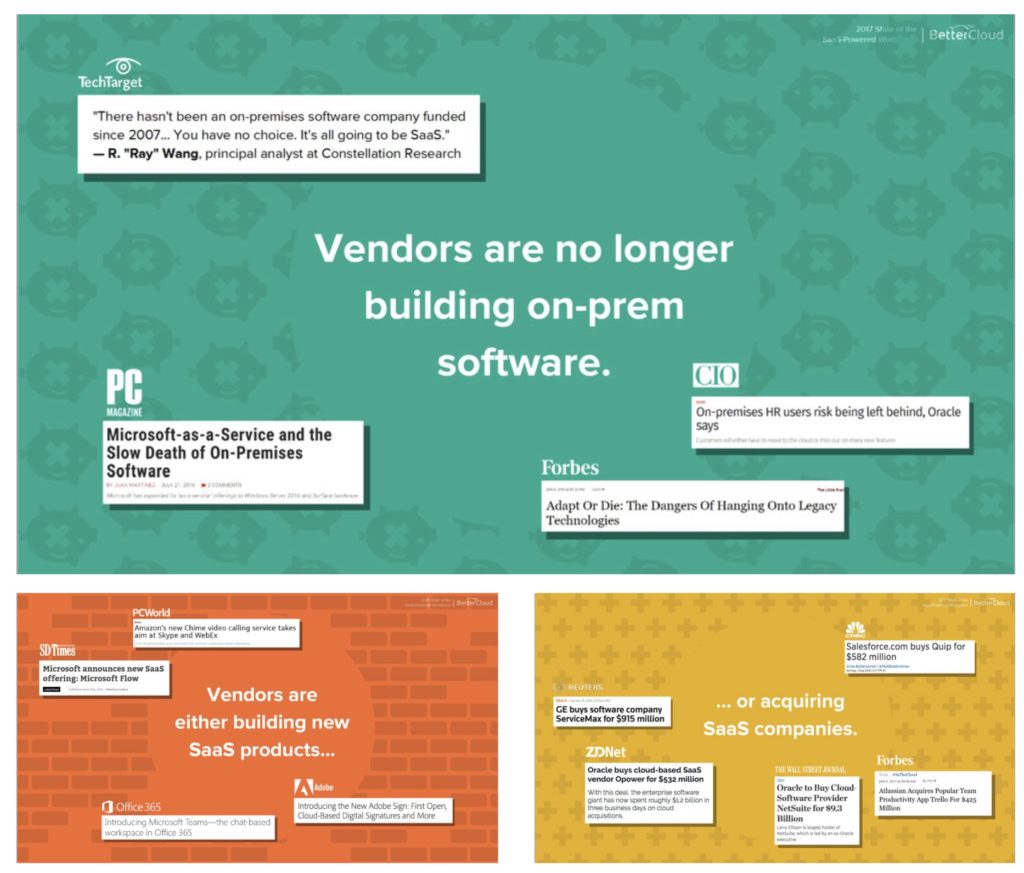
Cloud is making big waves these days. A typical cloud value proposition suggests the absence of IT involvement (no installations, no hardware), subscription models (no upfront cost) and improved collaboration. The last one is very interesting and often confusing. Unless the cloud system is multi-tenant, the value of collaboration is near zero. Read more in my article – Multi-tenant architecture and next PLM backbone and multi-tenant PLM and supply chain collaboration. Hosted PLM using one of IaaS (eg. AWS or Azure) will still have the same flaws of single database with the same collaboration value we had from PLM systems during the last 10-20 years.
A modern manufacturing environment is suggesting a lot of involvement of “others” in product development and manufacturing process – increased number of 3rd parties, 3rd party volatility has increased, partners are more involved in product development, the number of disciplines has increased as well as the number of internal partners increased as well.
Collaboration is key when you need to provide a response to the challenges I mentioned above. But things are not as simple as you would expect. Accelerating Product Development with the Cloud (eBook) published by Jim Brown of Tech-Clarity suggests a few interesting data points.
Collaboration adds value but increases the difficulty. It’s challenging enough to find and share data internally with other departments. Remote workers and third parties including engineering firms, suppliers, and contract manufacturers significantly add to that challenge. About two-thirds of respondents report that including 3rd parties in workflows (69%), designing concurrently with them (70%), and merging their designs (62%) are somewhat to very challenging. While collaboration with others is challenging, it is also a valuable best practice. Effective collaboration is important because it leads to better, faster product development outcomes by getting things right the first time. But it can come at a price if not executed efficiently
It made me think about how modern cloud systems can be used and what is the key problems companies should avoid.
As product development moving online (and to cloud system), I can see how people are starting to be dependent on their computers, online meetings, chats, connections and tools that can help them to survive. Everything is happening online and it brings tons of questions.
One of the most important questions is how cross-functional teams can be organized from engineers, contractors, suppliers and other 3rd parties? A good team organization can provide answers to many challenges by working on different tasks and contributing to results. But it not as simple as you think. The team will be working with many cloud tools and systems and can face the challenge I call a compartmentalized cloud.
The root cause of compartmentalized cloud is a growing number of SaaS tools and their specialty. Here are a few data points.
2017 State of SaaS-powered workspace report highlighted an amazing growth of SaaS applications and the establishment of a new workspace. Here is an interesting data point:
Companies use 16 SaaS apps on average today, up 33% from last year. 73% of organizations say nearly all (80%+) of their apps will be SaaS by 2020.
According to 2019 SaaS Trends Report:
SaaS spending and adoption continue to rise. In 2018, SaaS spend and adoption continued to grow quickly across all company sizes. In 2018, the average company spent $343,000 on SaaS, a 78% increase from the previous year.
Companies spend more on SaaS than laptops. The software toolset is more expensive than the hardware it runs on. In 2018, the average cost per employee of SaaS subscriptions ($2,884) was higher than the cost of a new laptop ($1,299 for an Apple Macbook Pro). And as more companies move to run entirely on SaaS, the software vs. hardware spending gap is likely to widen.
My favorite picture from the report is this one. The key passage:
Vendors are no longer building on-prem software. Vendors are either building new SaaS products or acquiring SaaS companies.

Let’s come back to manufacturing companies and cloud tools. The biggest challenge of product development and manufacturing is to coordinate the process, share data between applications and domains. No single tool can provide an answer to all questions. Companies are selecting services “to get the job done” and running into the risk to miss a single version of the truth. In a good all days of PLM, a central company database was a single version of the truth. Not these days. Now, we have distributed a single version of the truth. But to manage such a piece of information demands a new type of technology. Here is my take on the main characteristics of this tech:
1- Multi-tenant data management
2- Flexible data model
3- Seamless integration with other SaaS, desktop and enterprise tools.
Interestingly enough, PLM vendors seem to be still developing on premise products. I think, established PLM technologies will be facing significant challenges because most of these products are single-tenant and can be only hosted using cloud services. It is next to impossible to turn these existing technologies into SaaS services.
What is my conclusion?
Compartmentalized cloud is a big deal that can slow down adoption of SaaS applications in manufacturing companies. Integrations, flexible data models and multi-tenancy will play key roles on the way to streamline processes between SaaS applications and setting a stage for connected systems and services. In the next 2-3 years, we are going to see a lot of movements in SaaS PLM applications. It is an opportunity for new SaaS tools to get in the market, while big PLM vendors are strategizing and deciding what to do with their existing tools, to develop new SaaS tools or to buy SaaS companies. Just my thoughts…
Best, Oleg
Disclaimer: I’m co-founder and CEO of OpenBOM developing cloud based bill of materials and inventory management tool for manufacturing companies, hardware startups, and supply chain. My opinion can be unintentionally biased.
The post SaaS PLM and Compartmentalized Cloud appeared first on Beyond PLM (Product Lifecycle Management) Blog.



Be the first to post a comment.